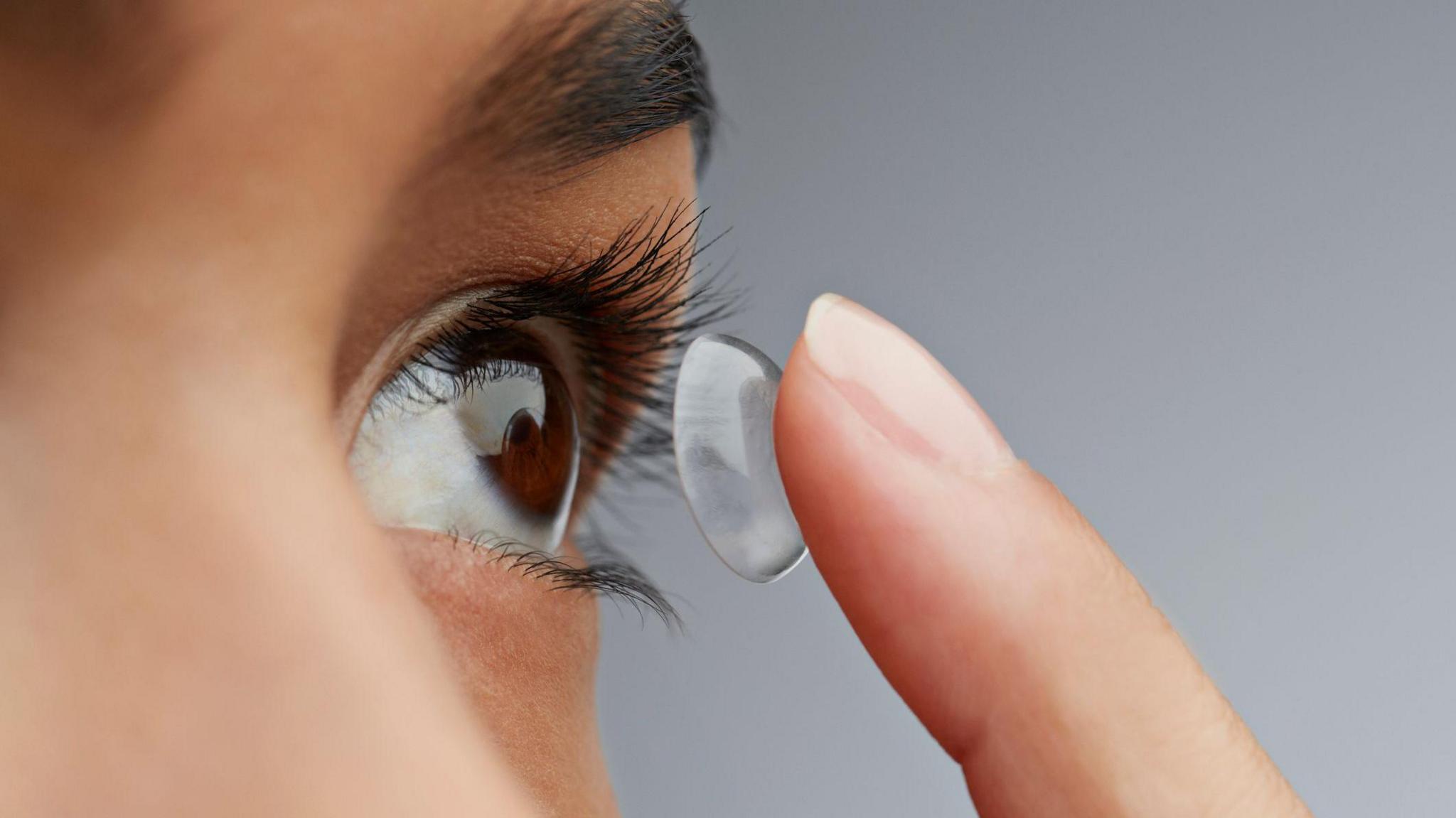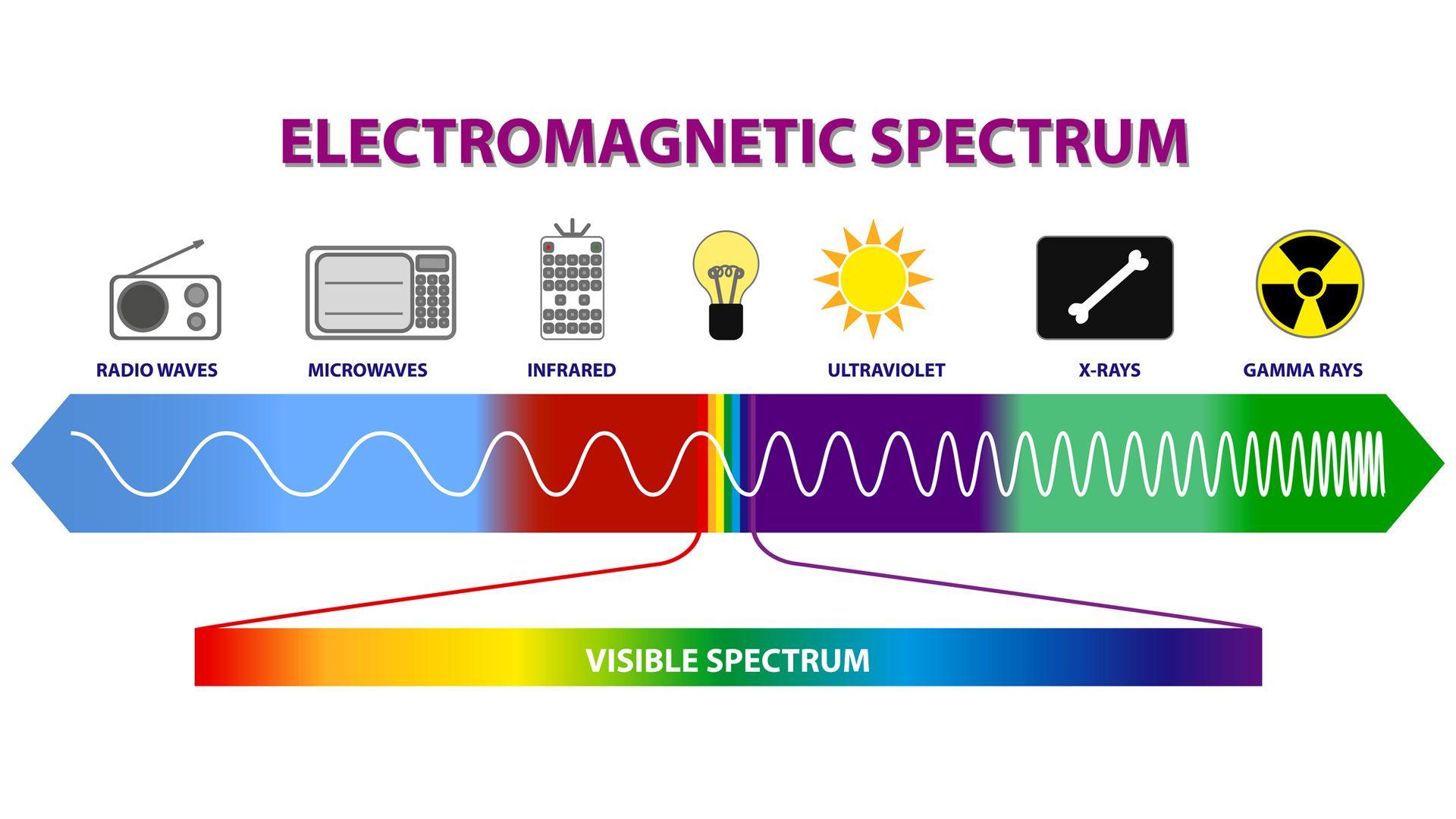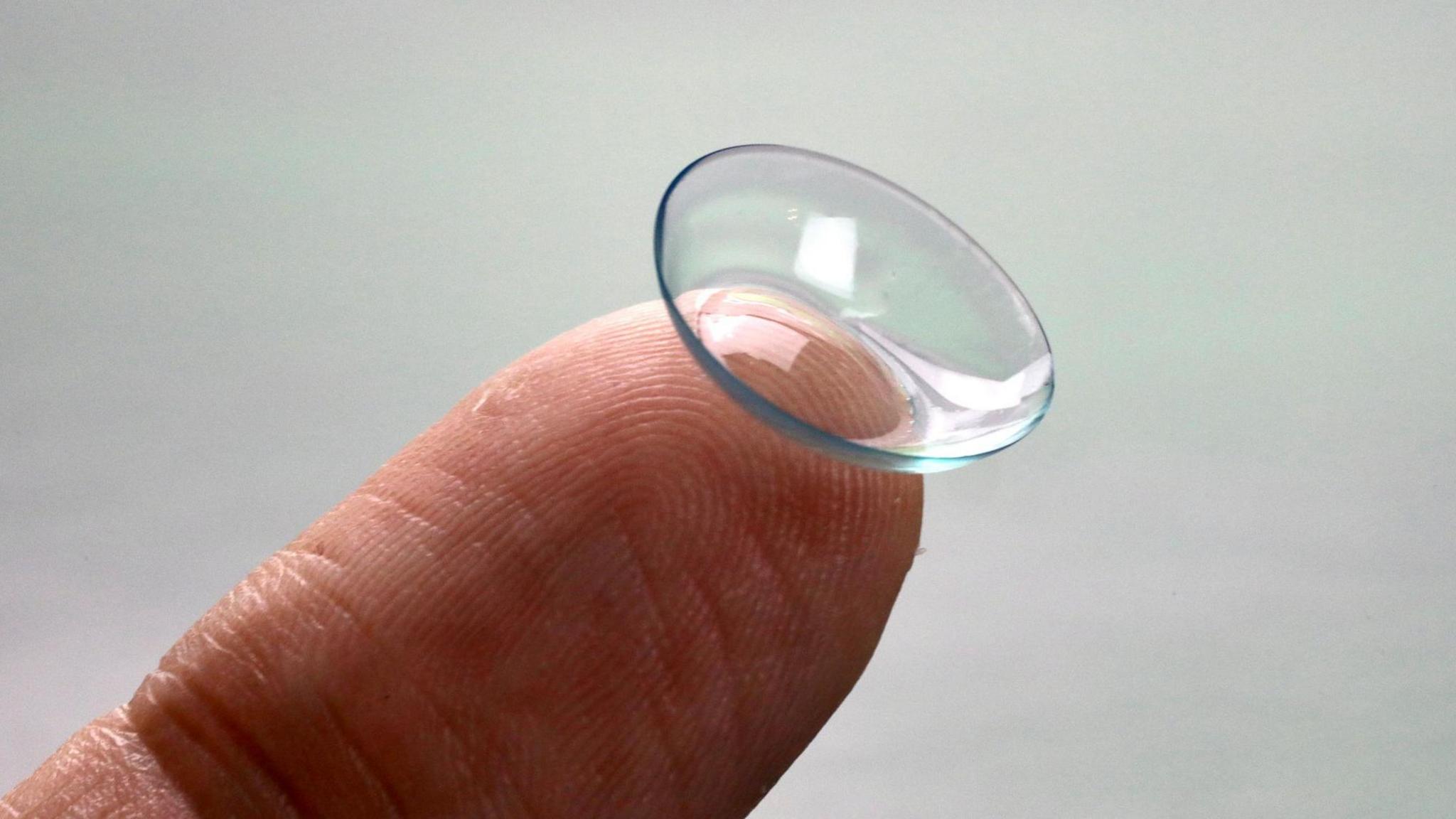Scientists create contact lenses that can help us see in the dark

It might sound like a gadget from a sci-fi movie, but it's real!
- Published
A team of scientists from China have created contact lenses that can help people to see in the dark.
These new lenses allow people to see infrared light, which is normally invisible to the human eye.
Infrared technology has been around for a while, in the form of things like night-vision goggles, however, these are quite heavy and need power to work.
Prof Tian Xue, a scientist at the University of Science and Technology of China, said their work could help to inspire a range of contact lenses, glasses and other wearable devices that give people "super-vision", as well as helping people with optical conditions like colour blindness.
- Published1 August 2019
- Published9 January
- Published9 January 2020
Why can we see some things and not others?

There are seven types of electromagnetic (EM) waves, made of light and radiation, which are part of something called the Electromagnetic spectrum.
Humans can only see 'visible light', but there are lots of other types like radio waves, ultraviolet light and infrared light, which we cannot see.
However, scientists have developed technology like sonar which helps us to 'see' sound, and night-vision cameras which help us to see infrared light using temperature.
How do the infrared contact lenses work?

The team of scientists created contact lenses that have engineered nanoparticles in them.
Nanoparticles are tiny microscopic structures that are made up of a few hundred
atoms.
These engineered nanoparticles absorb and change near infrared light into blue, green and red light, which is visible to the human eye.
In experiments to test out the lenses, people said they could see signals flashed from an infrared light, and could tell what direction the light came from.
As well as this, people said their infrared vision improved when they closed their eyes.
This could be because our eyelids help to block visible light more than infrared, so there was less visible light to interfere.
However, the scientists have said that the lenses are not quite sensitive enough to see low levels of infrared light, so they do not give complete thermal vision yet, but the team hope that future work can help to improve the technology.
